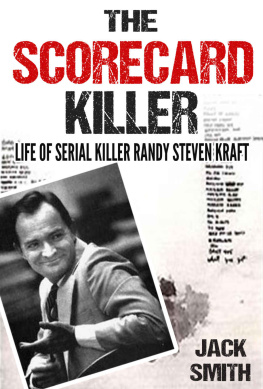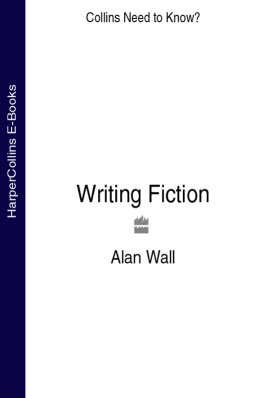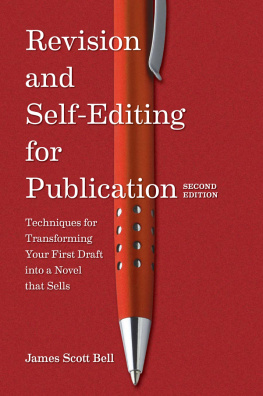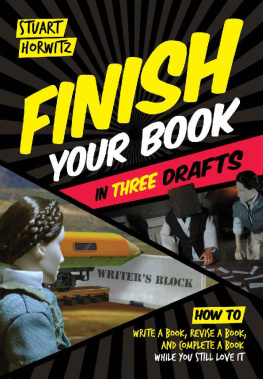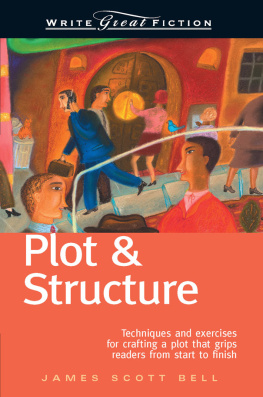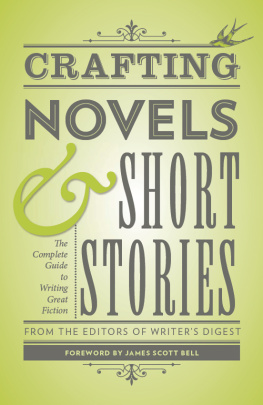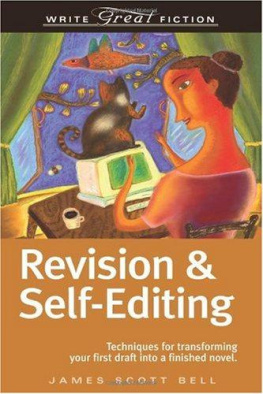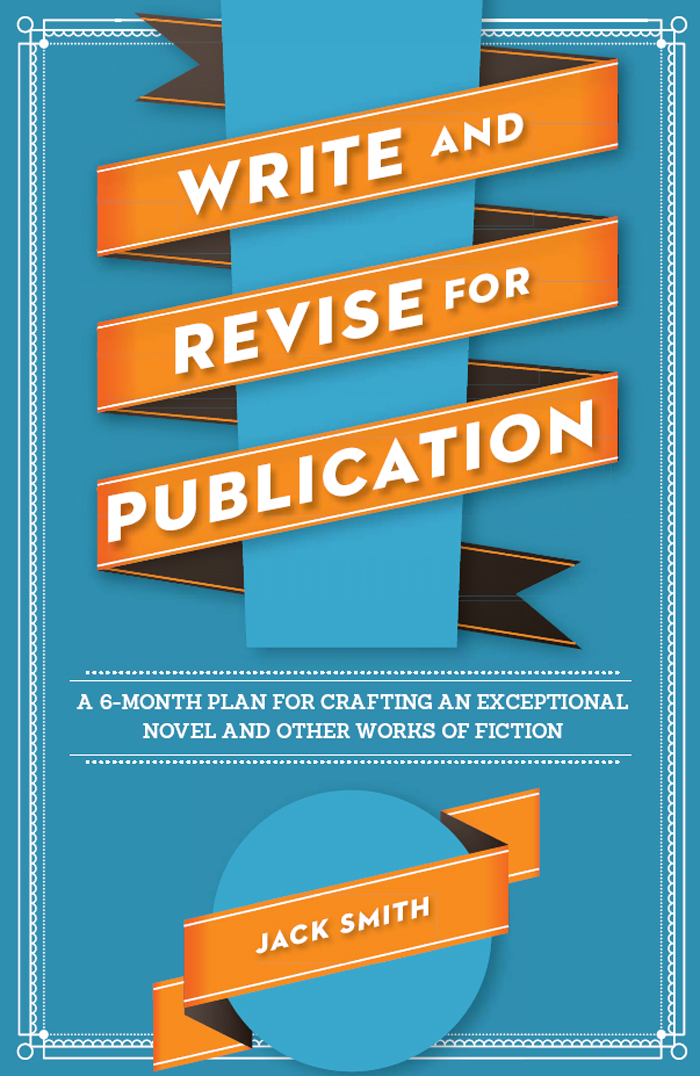WRITE AND
REVISE FOR
PUBLICATION
A 6-MONTH PLAN FOR CRAFTING AN EXCEPTIONAL NOVEL AND OTHER WORKS OF FICTION
JACK SMITH

WRITE AND REVISE FOR PUBLICATION. Copyright 2013 by Jack Smith. Manufactured in the United States of America. All rights reserved. No other part of this book may be reproduced in any form or by any electronic or mechanical means including information storage and retrieval systems without permission in writing from the publisher, except by a reviewer, who may quote brief passages in a review. Published by Writers Digest Books, an imprint of F+W Media, Inc., 10151 Carver Road, Suite # 200, Blue Ash, OH 45242. (800) 289-0963. First edition.
For more resources for writers, visit www.writersdigest.com.
17 16 15 14 13 5 4 3 2 1
Distributed in Canada by Fraser Direct
100 Armstrong Avenue
Georgetown, Ontario, Canada L7G 5S4
Tel: (905) 877-4411
Distributed in the U.K. and Europe by F&W Media International
Brunel House, Newton Abbot, Devon, TQ12 4PU, England
Tel: (+44) 1626-323200, Fax: (+44) 1626-323319
E-mail: postmaster@davidandcharles.co.uk
Distributed in Australia by Capricorn Link
P.O. Box 704, Windsor, NSW 2756 Australia
Tel: (02) 4577-3555
Edited by James Duncan
Cover designed by Claudean Wheeler
Interior designed by Bethany Rainbolt
Production coordinated by Debbie Thomas

DEDICATION
To my wife, Mary Jane Smith, and my four children: Penny, Nat, Nora, and David.
ACKNOWLEDGMENTS
Many thanks go to James Duncan, my editor at Writers Digest Books, for great help on refining ideas in this book. And special thanks to my fellow writer and friend, Robert Garner McBrearty, for feedback at several stages of the process.
ABOUT THE AUTHOR
Jack Smiths novel Hog to Hog won the 2007 George Garrett Fiction Prize and was published by Texas Review Press in 2008. He has published stories in a number of literary magazines, including Southern Review, North American Review, Texas Review, X-Connect, In Posse Review, and Night Train. His reviews have appeared widely in such publications as Ploughshares, Georgia Review, American Book Review, Prairie Schooner, Iowa Review, Mid-American Review, Pleiades, The Missouri Review, and Environment magazine. He has contributed almost two dozen articles to Novel & Short Story Writers Market and a dozen to The Writer. His coauthored nonfiction environmental book entitled Killing Me Softly was published by Monthly Review Press in 2002. Besides his writing, Smith coedits the Green Hills Literary Lantern, an online literary magazine published by Truman State University.
CONTENTS
A Primer on the Elements and Techniques of Fiction
Preparing to Write
Drafting
Revision Strategies
Revising for Strong Character
Rethinking Point of View
Strengthening the Conflict
Rethinking Plot and Structure
Honing Basic Prose Techniques
Shaping Great Scenes
What About Setting?
Rethinking Openings and Endings
Improving Style, Mood, and Tone
Working Theme and Idea
Fine-Tuning
Marketing Your Work
INTRODUCTION
Good fiction calls for a method. This book wont teach you how to write genre fiction, such as science fiction, fantasy, or romance, but it will teach the principles of all good fiction writing, many of which can be transferred to any genre.
This book is predicated on the idea that the first draft must be a work of the imagination. Let the imagination have its way. Give it free rein as much as possible.
The first draft is worth a lot if it is truly a work of the imagination, but this doesnt mean its a work of artnot yet.
Unless youre a natural, or you strike it lucky, the first draft of your story or novel will need a lot of work. Sometimes, if you have a burst of creative energy, the work will seem quite inspired, and when you quit for the day, youll feel satisfied. And yet, if youre like me, when you take a second look, you will probably think otherwise. Suddenly the writing sounds amateurish, half-baked, and melodramatic. This discourages. You thought you had something fantastic, but look at this.
What to do? Dump it? Maybe do something else, like write nonfiction?
This is a misunderstanding of the process. You should expect your first draft to require a lot of attention. Why wouldnt it? Fiction writing, after all, is a complex actwe are calling upon the powers of our creative resources, our imagination, and our intellect. We must create a whole world, one where characters seem real and compelling enough to make the reader want to keep reading, keep believing. This is difficult stuff, and you usually dont achieve perfection the first time around. And you shouldnt expect to either.
But you will get there if you take revision seriouslyif you take a manuscript through a number of important stages. At any stage in the process, youre working toward your goal. Youre not there yet, but you will be soonif you just stay with it. Youre on your way to producing good workpolished work ready to submit to a magazine, agent, or book publisher.
In this book I will recommend a two-stage approach, based on three-month intervals:
- THE FIRST THREE MONTHS: Produce your short story draft(s) or novel draft.
- THE SECOND THREE MONTHS: Revise and fine-tune your story draft(s) or novel draft, developing a submission-ready manuscript.
Stage One is the production stage. For a short story, the writing could be completed in a single or several sittings, but basically, you just get the story down without worrying about getting it all right. Gun out as many first draft stories as you can in this three-month period. This will give you more options for revision later. For a novel, unless you need to do a lot of research, the first draft could be done in as little as thirty days, as with the National Novel Writing Month thats held each November, or it could take the entire three months. If you pound out a novel in thirty days, go over what youve written and supply missing material to fill in holes. Again, give your imagination free rein. This may take you the remaining sixty days of Stage One. But if you finish earlier, start revising.
Stage Two, revision, consists of a lot of rethinking and overhauling as you critically attend to the various elements of the craft. This means developing strong characterization, strong plotting, and strong scene development, among other things, including the ability to refine the language so it makes the characters live and breathe, grabbing the reader at both the emotional and intellectual level. While your critical abilities are certainly needed here, you must avoid killing the story, robbing it of its life. Therefore, your imaginative faculty is needed in both stages.
While this book covers both the production stage and the revision stage, it devotes more attention to the latter. Briefly, the first three chapters make up Stage One. In Chapter One, I offer a primer on the various elements and fictional techniques. In Chapter Two, I consider the resources for fiction writing and how these might help get one started. Chapter Three is devoted to drafting.



